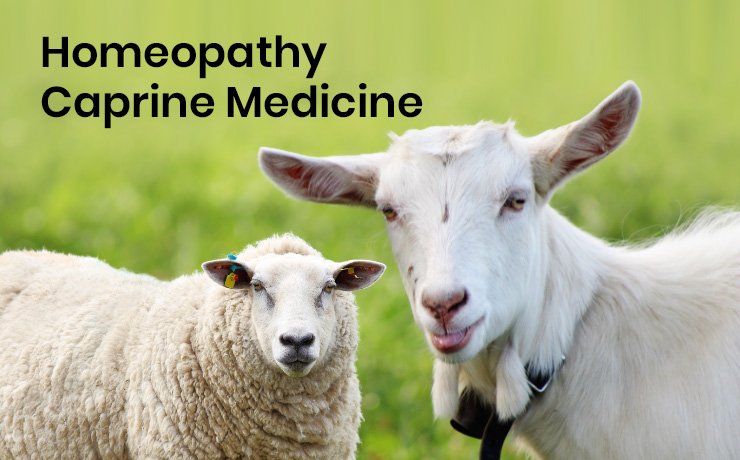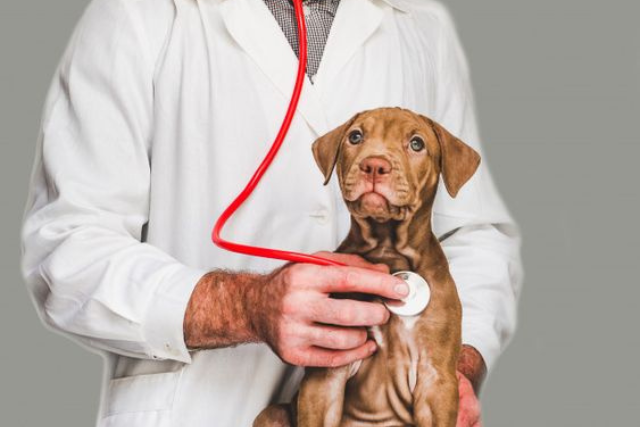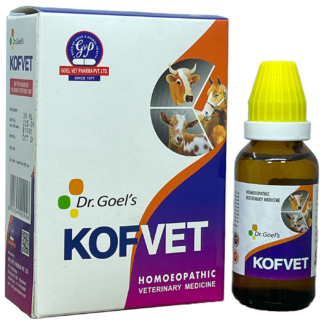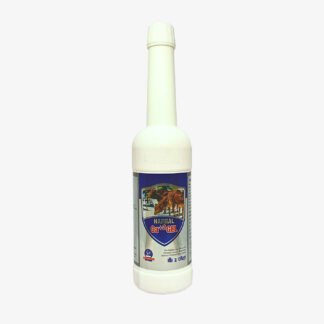Rascals with Rashes: Demystifying and Treating Dog Skin Rashes

Does your cute and cuddly friend, my pet, look like it is constantly itching, chewing on itself, or licking its skin? You’re not alone. This is a common problem among dogs in India that results in irritation and distress in dogs and their owners.
If you’re uncertain about the best course of action for your dog’s rash, this blog is here to guide you. We delve deep into the root causes of dog rashes, demystify all testing procedures, including pet allergy tests, and provide practical advice to help you find a solution for your furry friend’s discomfort.
Understanding the Itch: Common Causes of Dog Rashes
India’s warm and humid climate can exacerbate various skin conditions in dogs. Here’s a breakdown of some frequent culprits behind those bothersome rashes:
- Dog Flea Infestation: These tiny bloodsuckers are a menace, causing intense itching and irritation. Fleas can also trigger allergic reactions in some dogs, leading to more severe rashes.
- Food Allergies: Just like humans, dogs can develop allergies to certain ingredients in their food. Common allergens include chicken, beef, dairy, and wheat.
- Atopic Dermatitis in Dogs: This chronic, inflammatory skin condition often has a genetic predisposition and can be triggered by various allergens, including dust mites, pollen, and mould. These allergens are common in many environments, so it can be challenging to avoid them altogether. However, reducing your dog’s exposure to these allergens can help to manage their symptoms.
- Mange: This parasitic skin disease caused by mites can be highly contagious and requires prompt veterinary attention. There are different types of mange, each with its symptoms.
- Bacterial and Fungal Infections: These are two types of skin infections that can affect dogs. A kind of bacteria called Staphylococcus usually causes bacterial infections, while various types of fungi cause fungal infections. Skin wounds, insect bites, and moisture trapped in skin folds can create an ideal environment for both types of infections, leading to rashes and infections.
- Yeast Infections: Yeast naturally occurs on a dog’s skin, but an overgrowth can cause redness, itching, and a foul odour. This is more common in warm, humid climates like India.
- Contact Dermatitis: Exposure to harsh chemicals, like cleaning products or certain plants, can trigger an allergic reaction, causing a rash on the areas that came into contact.
- Stress and Anxiety: While less common, stress and anxiety can manifest in some dogs as skin issues, including rashes and excessive licking. Stress can weaken the immune system, making dogs more susceptible to skin infections. Additionally, dogs may scratch or lick their skin more when stressed, leading to rashes or other skin problems.
Check Out Our Product : – DIABOSYZ JUMBO KIT for PETS 30ML For Diabetes
Advanced Diagnostics for Dog Rashes Treatment

Diagnosing the exact cause of your dog’s rash is crucial for effective dog rash treatment. With the advancements in veterinary medicine, several diagnostic tools can aid veterinarians in pinpointing the culprit:
- Physical Examination: The first step is to have a thorough examination by a veterinarian. They will assess the location, severity, and type of rash.
- Skin Scrapings: This simple test involves collecting a sample of skin cells to identify the presence of mites or other parasites.
- Cytology: Examining a sample of skin cells under a microscope can aid in identifying bacterial or yeast infections.
- Food Trial: A veterinarian might recommend a food elimination trial to identify the trigger for suspected food allergies.
- Blood Tests: While less common, blood tests can sometimes help rule out underlying medical conditions that might contribute to skin problems.
- Pet Allergy Tests: These tests, available in some veterinary clinics, can help identify specific allergens causing atopic dermatitis.
Consulting a Veterinary Dermatologist
In some cases, your veterinarian might recommend consulting a veterinary dermatologist. These specialists have advanced training in diagnosing and treating complex skin conditions in dogs. They can offer specialised diagnostic tests and treatment plans tailored to your dog’s needs. If your dog’s rash is severe, persistent, or doesn’t respond to initial treatment, your veterinarian may refer you to a dermatologist for further evaluation and care.
Treatment Options for Dog Rashes
The treatment for your dog’s rash will depend on the underlying cause. Here’s an overview of some common approaches:
- Treating Parasites: To prevent flea and tick infestations, use a veterinarian-approved flea and tick preventative medication. These medications, such as spot-on treatments or oral tablets, contain active ingredients that kill fleas and ticks. Specific medications will be prescribed based on the type of mite involved for mange. These may include topical treatments, oral medications, or injections.
- Addressing Food Allergies: If a food allergy is identified, your veterinarian will recommend a hypoallergenic diet that excludes the offending ingredient(s).
- Managing Atopic Dermatitis: There’s no cure for atopic dermatitis, but various treatment options can manage symptoms and improve your dog’s quality of life. These include antihistamines, corticosteroids, medicated shampoos, and immunotherapy (allergy shots).
- Treating Infections: Depending on the type of infection (bacterial or fungal), your veterinarian will prescribe antibiotics or antifungal medications.
- Soothing the Itch: In some cases, topical ointments or sprays containing oatmeal or other soothing ingredients can help alleviate itching and discomfort.
- Addressing Underlying Stress: If stress is a contributing factor, addressing the underlying cause and implementing stress-reduction techniques can improve your dog’s skin health.
Home Care Tips for Managing Dog Rashes
While veterinary care is essential for diagnosing and treating the underlying cause of your dog’s rash, here are some home care tips that can provide relief and support your dog’s healing process:
- Maintain a Clean and Healthy Environment: Regularly bathe your dog with a veterinarian-approved shampoo suitable for its skin condition. This helps to remove allergens and irritants from your dog’s skin, reducing the risk of rashes. Keep its bedding and living area clean and free of allergens. This can help prevent or reduce the severity of allergic reactions, contributing to skin rashes.
- Implement a Healthy Diet: Ensure your dog receives a well-balanced diet from a reputable brand. If food allergies are suspected, strictly follow the veterinarian-recommended hypoallergenic diet.
- Reduce Scratching: Use an Elizabethan collar (cone) to prevent your dog from self-traumatising through excessive scratching or licking. This will allow the skin to heal correctly.
- Manage Stress: Give your dog plenty of exercise and mental stimulation. Create a calm and relaxing environment at home. Consider pheromone diffusers or calming treats if anxiety is suspected to worsen the skin condition.
- Monitor and Report: Closely monitor your dog’s skin for any improvement or worsening of the rash. Report any changes or concerns to your veterinarian promptly.
Remember: Early diagnosis and proper treatment are crucial for effectively managing dog rashes and preventing complications. If left untreated, dog rashes can lead to more serious skin infections, chronic skin conditions, or other health problems. Don’t hesitate to consult your veterinarian if you notice any signs of skin irritation in your furry friend. With the right approach, you can help your dog find relief from the itch and get back to enjoying life scratch-free!
Additional Tips for Dog Owners

- Parasite Prevention: Due to the warm and humid climate, year-round flea and tick prevention is crucial for dogs in India. Talk to your veterinarian about the most suitable product for your dog’s breed, lifestyle, and age.
- Seasonal Allergies: During pollen seasons or periods of high humidity, be extra vigilant about monitoring your dog for signs of allergic flare-ups. You might need to adjust your bathing routine or consult your veterinarian about additional allergy management strategies.
- Dietary Considerations: Opt for dog food formulations made with high-quality ingredients and limited protein sources, especially if your dog has suspected allergies. Consider consulting a veterinary nutritionist for personalised dietary recommendations.
Conclusion
Dog rashes can be a source of discomfort for your furry companion and a cause of worry for you. By understanding the common causes, seeking veterinary guidance, and implementing a comprehensive treatment plan, you can help your dog find relief and get back to enjoying life. Early diagnosis and proper care are critical to a speedy recovery and a happier, itch-free pup!
Must read : – Senior Support: Homeopathic Remedies for Common Ailments in Aging Dogs
 Australian Shepherd
Australian Shepherd Beagle
Beagle Belgium Shepherd
Belgium Shepherd Bernese Mountain Dog
Bernese Mountain Dog Border Collie
Border Collie Boxer
Boxer Bulldog
Bulldog Cavalier King Charles Spaniel
Cavalier King Charles Spaniel Chihuahua
Chihuahua Cocker Spaniel
Cocker Spaniel Dachshund
Dachshund Doberman Pinscher
Doberman Pinscher Dogo Argentino
Dogo Argentino French Bulldog
French Bulldog German Shepherd
German Shepherd Golden Retriever
Golden Retriever Great Dane
Great Dane Himalayan Shepherd
Himalayan Shepherd Indie Dogs
Indie Dogs Labrador Retriever
Labrador Retriever Pakistani Bully
Pakistani Bully Pembroke Welsh Corgi
Pembroke Welsh Corgi Pitbull
Pitbull Pomeranian
Pomeranian Poodle
Poodle Pug
Pug Rottweiler
Rottweiler Shih Tzu
Shih Tzu Siberian Husky
Siberian Husky Yorkshire Terrier
Yorkshire Terrier Abyssinian
Abyssinian American Bobtail
American Bobtail American Shorthair
American Shorthair Balinese Cat
Balinese Cat Bengal Cat
Bengal Cat Birman
Birman Bombay Cat
Bombay Cat British Longhair
British Longhair British Shorthair
British Shorthair Burmese Cat
Burmese Cat Devon Rex
Devon Rex Exotic Shorthair
Exotic Shorthair Himalayan Cat
Himalayan Cat Maine Coon
Maine Coon Oriental Shorthair
Oriental Shorthair Persian Cats
Persian Cats Ragdoll
Ragdoll Scottish Fold
Scottish Fold Siamese Cat
Siamese Cat Siberian Cat
Siberian Cat Sphynx Cat
Sphynx Cat






































